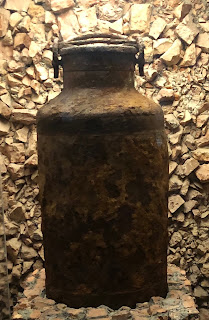Our Trip to Poland

Passport photos of my parents, Lewi (Leo-1929) and Fayga (Fay-1928) Dear friends and family, In the summer of 2019, Carol and I visited the Auschwitz exhibit at the Jewish Heritage Museum in NYC. I realized then that I did not understand enough about what was lost in the Holocaust. I did not understand enough about who I am. Not just millions of Jews but also a rich Jewish world and heritage was destroyed. That is my heritage. It is a treasure, writes Warsaw-born Jewish theologian and rabbi Abraham Joshua Heschel, that is “now contained in us... the present generation is still in possession of the keys to the treasure. If we do not uncover the treasures, the keys will go down to the grave with us, and the storehouse of the generations will remain locked forever ....” So, we decided to visit Poland, seeking to uncover those treasures, and to learn more about my family’s roots. And here we are. We hope to physically, emotionally and intellectually experience as much as possibl...




